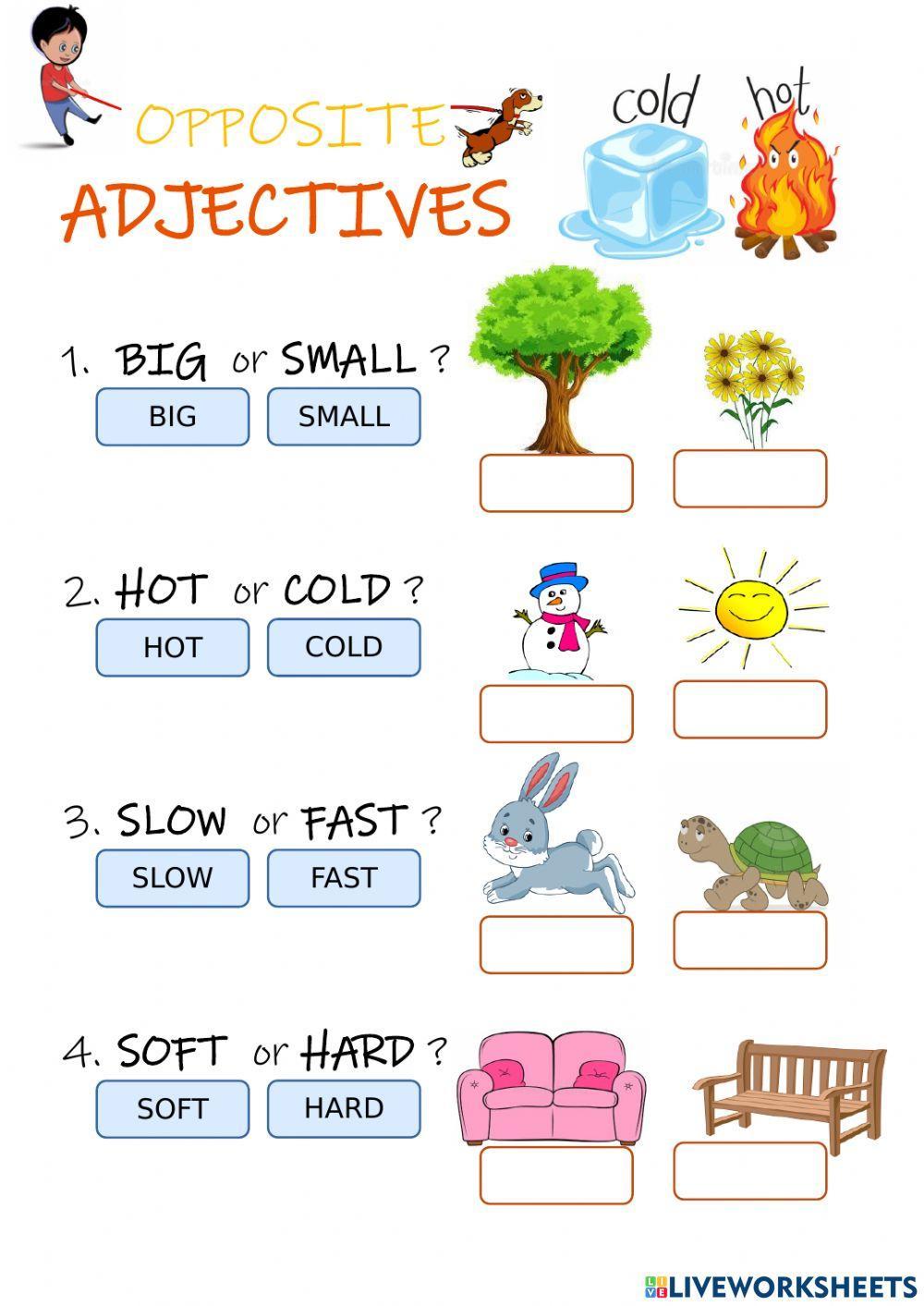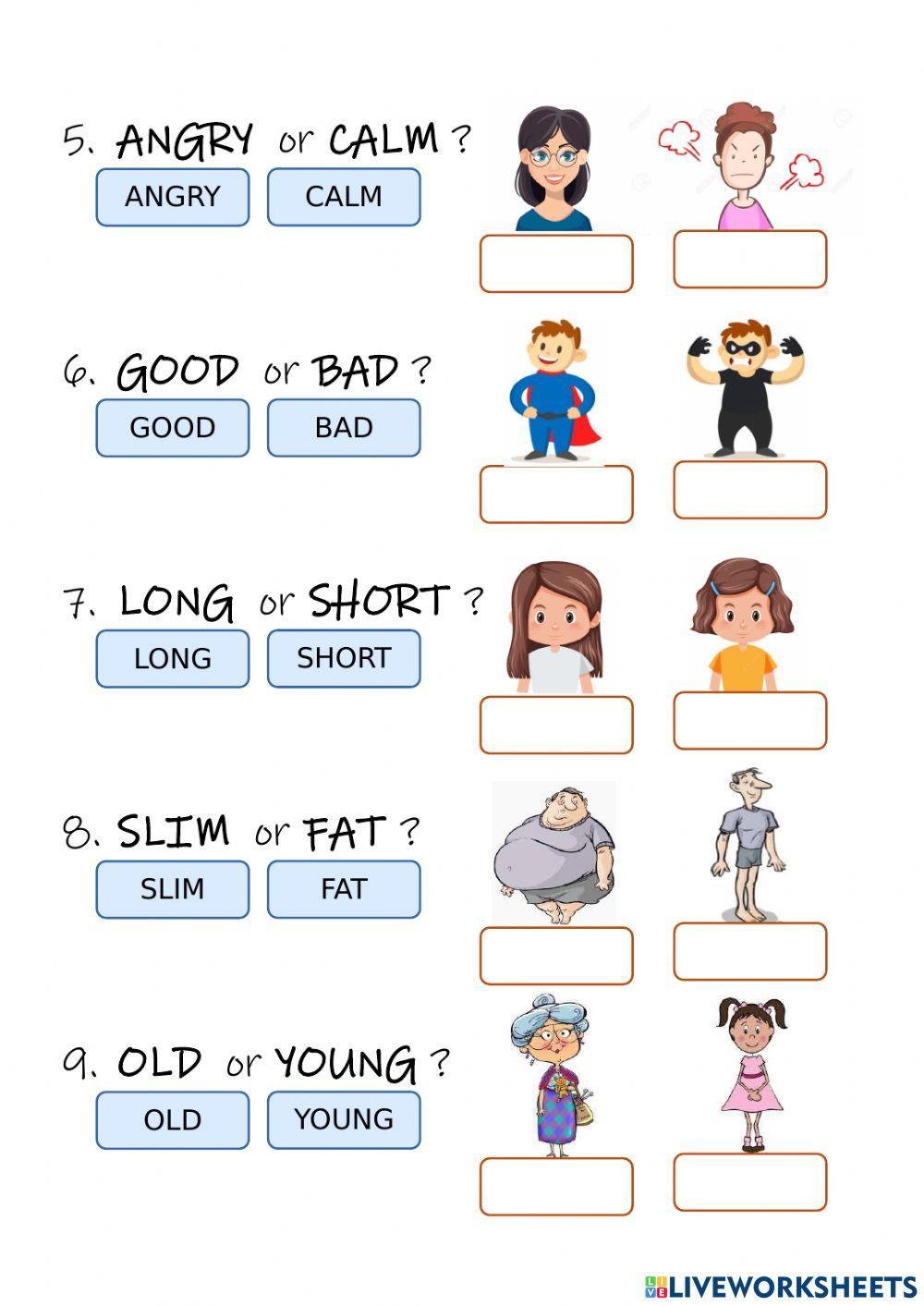Member for
4 years 8 monthsAge: 6-12
Level: Primary school
Language: English
(en)
ID: 2053309
28/05/2022
Country code: IT
Country: Italy
Main content: Opposite adjectives (2012865)
From worksheet author:
Match the correct ajdective.
Other contents:
basic vocabulary
Share / Print Worksheet

